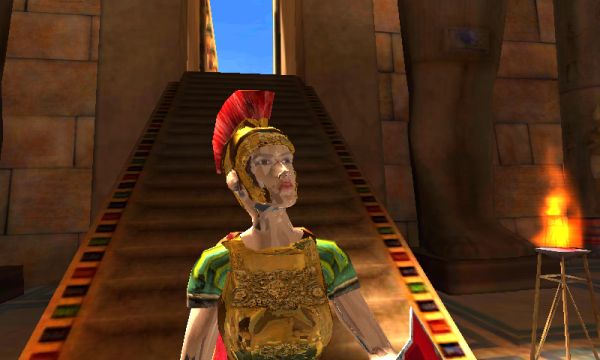Dual Core Snapdragon GPU Performance Explored - 1.5 GHz MSM8660 and Adreno 220 Benchmarks
by Brian Klug on March 30, 2011 4:29 PM EST- Posted in
- Smartphones
- Snapdragon
- Qualcomm
- Adreno
- MSM8660
- MDP
- Mobile
GLBenchmark 2.0
GLBenchmark 2.0 – as its name implies – tests OpenGL ES 2.0 performance on compatible devices across multiple software platforms. The suite includes two long benchmarking scenarios with a demanding combination of OpenGL ES 2.0 effects - texture based and direct lighting, bump, environment, and radiance mapping, soft shadows, vertex shader based skinning, level of detail support, multi-pass deferred rendering, noise textures, and ETC1 texture compression. In addition, there's a large suite of subtests and feature tests.
GLBenchmark 2.0 is the best example of an even remotely current 3D game running on this class of hardware–even then this is a bit of a stretch. GLBenchmark 2.0 is still our current go-to test as it is our best best for guaging real world performance, even across different mobile OSes. Keep in mind that with GLBenchmark 2.0 we still cannot run at any resolution than native – in this case 800x480 (WVGA) – and the same applies for other devices in the suite, they're all at respective native resolutions. GLBenchmark 3.0 will fix this somewhat with the ability to render into an off-screen buffer of arbitrary size.

We never formally reviewed the T-Mobile MyTouch 4G, but have one nonetheless and have included it in our benchmark numbers a few times. Likewise, I purchased an HTC Inspire 4G for personal use which we'll review soon. The importance of these two devices is that they represent the current generation of single-core Snapdragon SoCs with Adreno 205 graphics. Comparatively, the 1.5 GHz MSM8660 with Adreno 220 is 2.2x faster than the 1 GHz MSM8655 with Adreno 205.
Interestingly enough our run through Egypt came slightly higher with Vsync on than it did off - we're just showing the margin of error here.

Pro is a less challenging test than Egypt, as it's simply the GLBenchmark 1.x main suite with OpenGL ES 2.0 features and shaders. Already we're at the framerate cap here on both MSM8660 and likely OMAP 4430. Pro likewise demonstrates huge gains from Adreno 205 to Adreno 220 - in this case 3.7x.











70 Comments
View All Comments
Griswold - Saturday, April 2, 2011 - link
Maybeso, but it will definitely run at a lower clockspeed.Blacula - Thursday, March 31, 2011 - link
The Samsung Galaxy Tab is in there too.djgandy - Thursday, March 31, 2011 - link
Looks like GLBenchmark is vsynced for the rest of the phones too.How exactly did you turn vsync off?
metafor - Thursday, March 31, 2011 - link
As mentioned in the article, it's a feature the development phone he used allowed but most phones don't.Chloiber - Thursday, March 31, 2011 - link
...when I look at 3DMark Mobile...my poor HTC Desire...Impressive performance! Looking forward to the HTC Pyramid ;)
duploxxx - Thursday, March 31, 2011 - link
uggh its very uglyalxxx - Thursday, March 31, 2011 - link
TI omap4460 is sampling according to TIhttp://focus.ti.com/general/docs/wtbu/wtbuproductc...
even though they haven't released the docs for omap4430
but can get them via pandaboard.org
see TRM http://pandaboard.org/content/resources/omap-devic...
omap5430 and 5432 look interesting
http://focus.ti.com/general/docs/wtbu/wtbuproductc...
Hey Brian or Anand how about getting a pandaboard and doing some benching.
You can load pandroid http://pandaboard.org/node/225/#android
http://omappedia.org/wiki/OMAP_Pandroid_Main
http://code.google.com/p/pandroid/
I'd volunteer mine but a bit to far away plus not familar with android, mostly run angstrom.
Other interesting one(for dsp people) is TI finally have their floating point dsps above 1Ghz
with the release of the new integra/sitra chips http://focus.ti.com/dsp/docs/dspcontent.tsp?conten...
FITCamaro - Thursday, March 31, 2011 - link
This is what I'm waiting for before I get a new phone. My Droid will be enough until then. I don't have 4G service in my area yet anyway.PWRuser - Thursday, March 31, 2011 - link
Hopefully the MDP has little RAM so that actual phones may perform better.It's early but in terms of performance, it appears that this SoC lines up somewhere between Tegra 2 and the (projected) Tegra 3 performance.
Also it will be interesting to see a refresh of this unit when the fab switches to 28nm.
SheldonCooper - Friday, April 1, 2011 - link
The Taiji test is pixel heavy since it is a closed environment whereas the Hoover test is texture heavy (lots of terrain). They are useful to compare unified shader vs dedicated pixel- and texture shader architecture.